Some of the links in this post may be affiliate links.
If there ever was a plant unicorn, and a holy grail of plants, it is Monstera obliqua! This is an extremely rare plant that has taken us all by storm, and there is a lot of confusion because it can look very similar to Monstera adansonii.
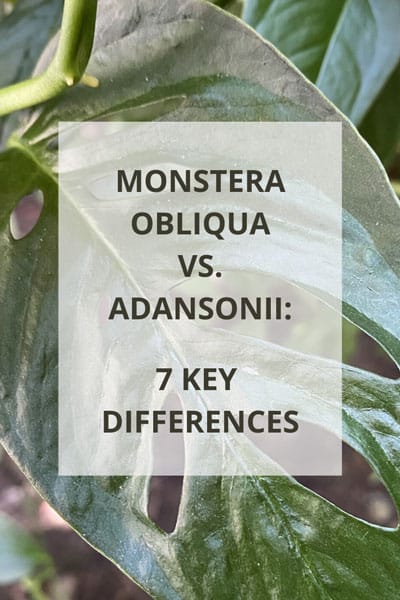
Not to mention, there is a lot of false advertising out there (whether it is intentional or not) that makes people think they are purchasing obliqua when in fact it is adansonii!
I’ve thoroughly researched this topic and condensed this article to point out 7 key differences when distinguishing Monstera obliqua vs. Monstera adansonii.
Which species do you have? Keep reading to find out how to tell the difference!
Table of Contents
MONSTERA OBLIQUA VS. ADANSONII
To summarize on a high level before I get into the details, here are the 7 distinguishing differences between the two Monstera species:
- The inflorescence
- Thickness of the leaves
- Shape of holes on the leaves
- Presence of, or lack of, stolons or runners
- Size and edges of the leaves
- Rate of growth
- Price! The price difference is STAGGERING
I consulted with Enid Offolter to get a stamp of approval on these differences. Enid is a self-proclaimed Horticultural enabler and owner of the famed NSE Tropicals, which is an incredible grower and supplier of rare and unusual tropical plants in Florida.
Not only that, she is an overall good human!
Now let’s get down to the 7 main differences between obliqua and adansonii!
1. INFLORESCENCE
One distinguishing difference is the number of flowers on the spadix. The Monstera genus belongs to the Araceae family of plants, or more commonly called the aroid family of plants, and they have very characteristic inflorescences.
All aroids have similar looking inflorescences that consist of a spathe (which looks like a hood and is a modified leaf) and the spadix which is the long, cone-like growth in the middle.
The flowers are actually very small and appear on the spadix. This is why what we think of as the “flower” is more correctly called the inflorescence, which is the spathe + spadix, and the actual flowers are tiny and appear on the spadix.
So how are the inflorescences different between obliqua and adansonii?
I’ll refer you to a post by Mick Mittermeier on Instagram where he explains and visually shows obliqua vs. adansonii.
Mick is a plant extraordinaire, collector and adventurer and has become a respected authority in the Monstera world.
See Mick’s post blow and be sure to click on the second photo within the post. The first photo shows the obliqua inflorescence which has substantially fewer flowers than the adansonii seen in the second photo.
The spathes are missing, but you can clearly see the difference visually (and be sure to read the caption with all the details!)
Are we likely to have our plants flower inside the home though? Chances are slim to none!
Although the inflorescence difference is a key difference, there are others that we’ll need to look at since they don’t commonly bloom indoors.
2. THICKNESS OF THE LEAVES
Given the rarity of obliqua, very few of us will ever have the chance to compare and contrast the two.
However, a second distinguishing difference between between obliqua and adansonii is the thickness of the leaves.
Monstera obliqua has decidedly thinner leaves than adansonii. In fact, obliqua leaves are almost papery thin.
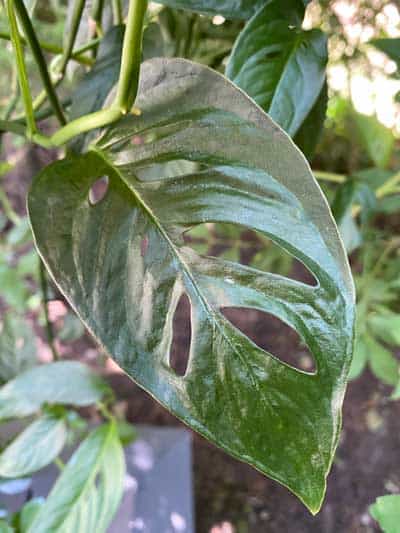
3. SHAPE OF HOLES ON THE LEAVES
The holes on Monstera adansonii tend to be a little narrower than obliqua holes which are a little rounder in appearance.
Take a look at Monstera adansonii below.
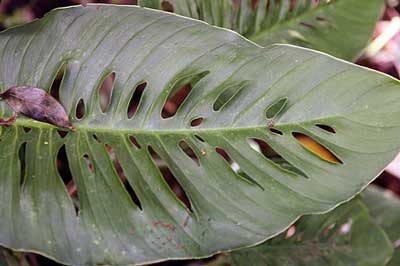
And compare that with the Monstera obliqua below.
4. STOLONS
Obliqua readily forms stolons wherease adansonii does not.
What is a stolon? A stolon is basically a “runner” or a long stem that starts growing and eventually forms roots and new plants at the nodes.
The plant sends out leafless stolons, or runners, along the forest floor and when it finds a tree to grow on, it’ll start climbing the tree.
Have you ever seen a strawberry plant? These are classic stolon-forming plants that send out runners and new plants all along the stolons.
Reportedly, if you are among a select, rare few that have an obliqua, they will readily form stolons even in your home. Adansonii will not.
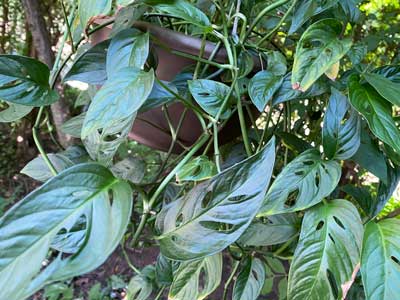
5. SIZE AND EDGES OF THE LEAVES
A fifth distinguishing feature are the size and edges of the leaves.
Obliqua leaves generally have slightly wavy edges on the leaves, versus adansonii whose leaf edges are straight. This was the opinion of Kaylee Ellen on YouTube and she posted a great, detailed video as well on this topic. Enid Offolter at NSE Tropicals also verified this for me.
Enid also mentioned to me that her form of Monstera obliqua (the Peruvian form) has never gotten a leaf longer than 6 to 7 inches long. Versus leaves of her mature adansonii, growing in her trees in Florida, which have leaves 2 feet long!
To further support the leaf size criteria, Michael Madison, who published A Revision of Monstera in 1977 stated “Monstera obliqua, M. xanthospatha, and M. minima are the smallest species of the [Monstera] genus, with stems 2-10mm thick and leaves 10-25 cm [4-10 inches].
6. RATE OF GROWTH
If you have a plant in your home and it is growing rapidly, you can be pretty much certain that you have an adansonii.
My own Monstera adansonii grows faster than probably any plant I own, and I have a lot of houseplants!
Obliqua grows painfully slow. In fact, even in the wild, in tropical climates and high humidity which it prefers, it will take them a few years to even climb a couple feet!
To contrast with this, my adansonii probably grows a couple feet in a month!
7. PRICE
If you didn’t pay an arm and a leg for your plant, you can be 99.999% sure that you have an adansonii and not an obliqua. You will be paying several hundred if not into the 4 figures for a Monstera obliqua.
If the price seems too good to be true, it probably was too good to be true!
Unfortunately, there are many sellers mislabeling plants as obliqua when in fact they’re “just” the common adansonii.
And honestly, you will be happier with an adansonii in your home anyway! Unless you paid a LOT of money and purchased from a reputable seller or private collector, it is highly unlikely that you have an obliqua. Sorry to say, but this is fact!
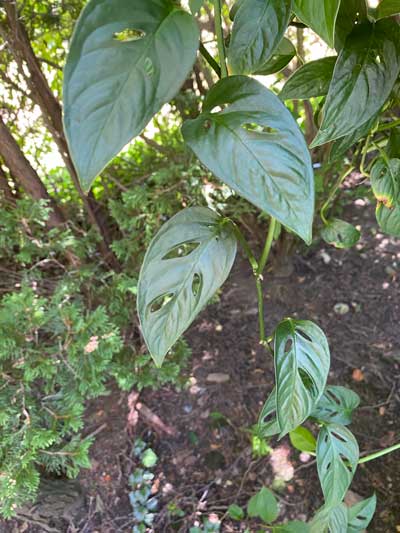
MORE INTERESTING FACTS
Here are more interesting facts that emphasize exactly how rare Monstera obliqua really is. It is truly a unicorn plant!
- According to Muggle Plants, there are only 17 times in history when Monstera obliqua was even seen in the wild.
- According to Mick Mittermeier, who posted an excellent and very detailed video on YouTube, there have only been two known private collectors that have ever mass produced any amount of Monstera obliqua (Bruce Mcalpin and Palm Hammocks) but they are no longer selling them.
- Those two individuals then supplied a few collectors (about 8-10 according to Mick). Outside of that, few if any people have this plant. The Peruvian form of Monstera obliqua is the only one that is known to be found in the U.S.
- There is also a myth that obliqua has “90% holes and 10% leaf.” This only gernally applies to mature Peruvian forms of obliqua. There are some other forms of obliqua found elsewhere in South America that have few if any holes at all!
- You will not find obliqua in any nursery. It just will not happen. Most obliqua are passed between private collectors and are extremely expensive.
So beware of shopping for obliqua or adansonii on Etsy, EBay, etc. Anything labeled as obliqua is almost always, unequivocally an adansonii.
And is it really that bad? Adansonii has a MUCH more satisfying rate of growth and makes for a much better houseplant. Leave the obliqua for collectors.
Are you obsessed with Monstera? I would love to collect one of each please! Be sure to check out my other Monstera and Monstera care posts:
Monstera Deliciosa Care: 5 Crucial Things You Need to Know
Monstera Problems: 11 Frustrating Problems & Solutions
How to Grow Monstera Siltepecana: Care, Repotting, Soil Mix

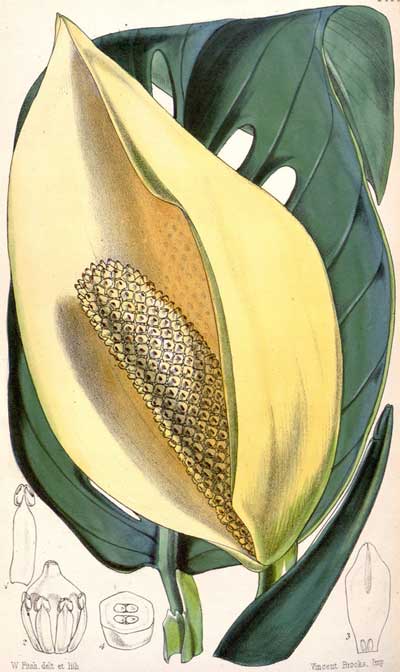
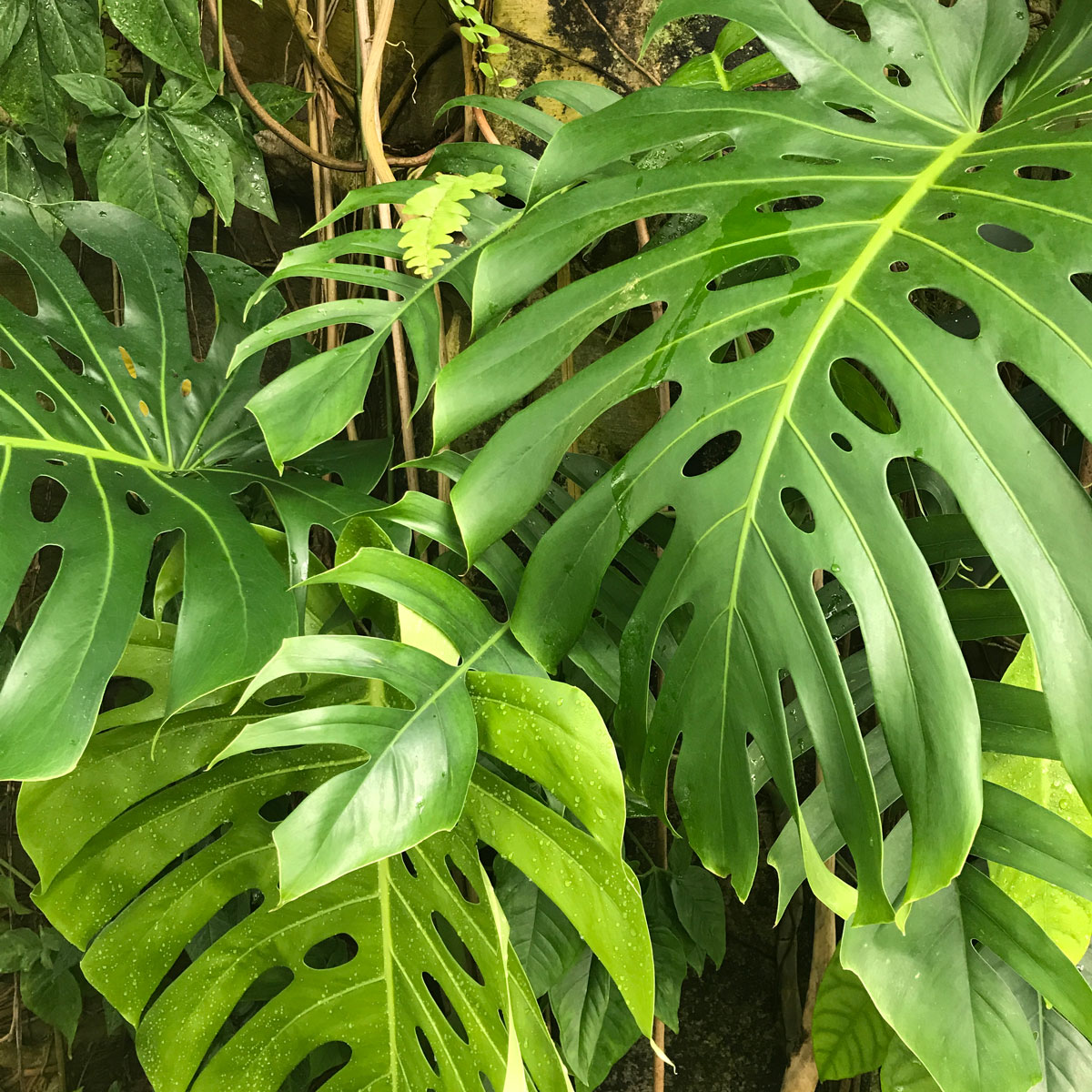
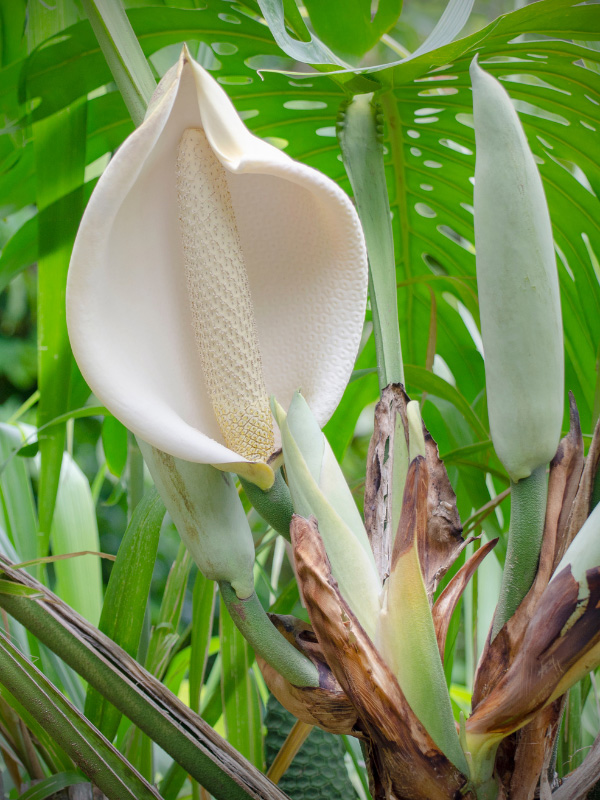
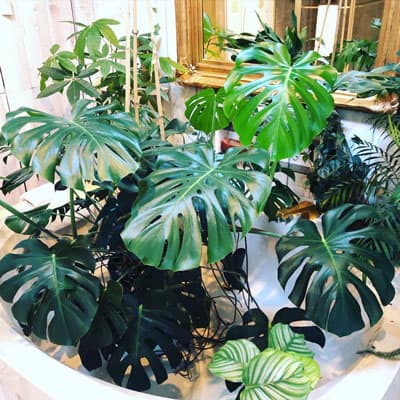
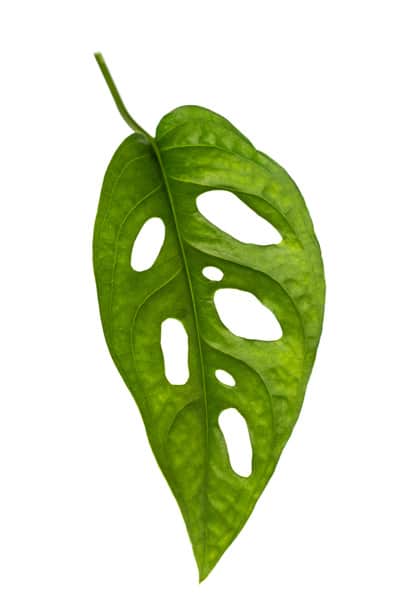
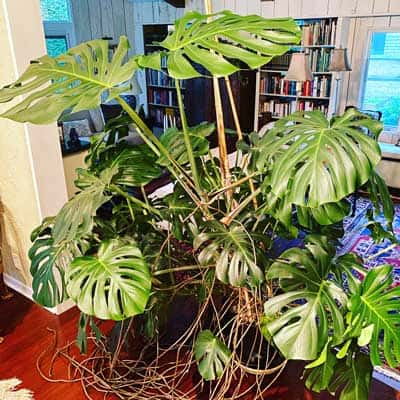
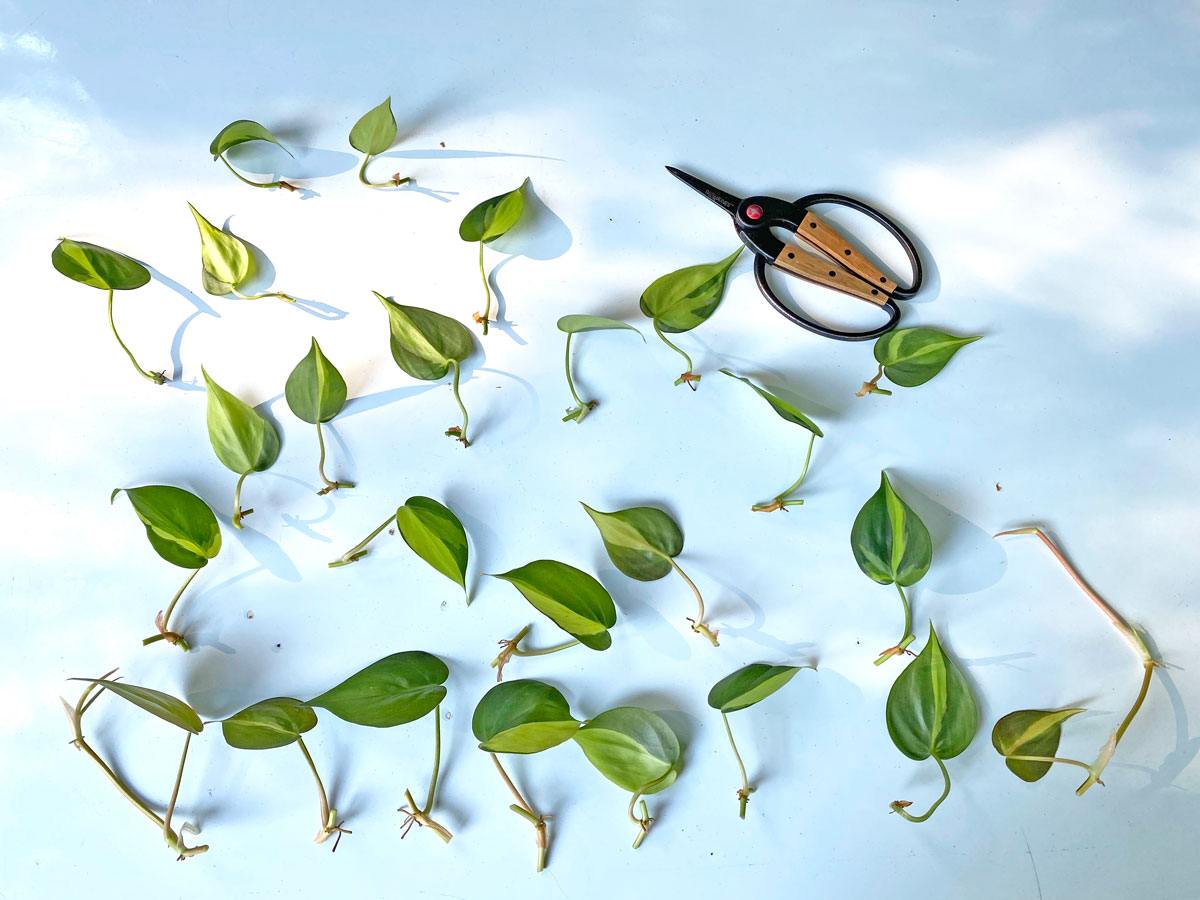
Shawna Wainwright
Wednesday 30th of November 2022
These are now almost as readily available for adansonii. I see them for sale almost daily!
Heather Rose
Sunday 19th of December 2021
Let’s just ignore me, shall we? An embarrassingly minute amount of research has enlightened me to the rarity of obliqua, and my piddling, but lovely, adonsonii was certainly not $800+. I shall now diminish, and go to the west. (๑>◡<๑)/
Heather B.
Thursday 16th of June 2022
@Heather Rose, I also purchased a wrongly labeled Adansonii that is definitely a Obliqua. I actually almost walked away without it but it was the only one and looked pitiful by itself so I snatched it from my local health food store for $10!!! I’m ridiculously excited right now. I was so confused why my plants leaves were nothing like the ones I saw in photos. Now I know why. My plant is quit large and now I’m debating do I keep it all or sell some of it. 😂
Heather Rose
Sunday 19th of December 2021
I was wondering the date for this post, because I’m pretty sure I have an Obliqua that was marked as an Adansonii, and had no idea the former was so rare/expensive.
Raffaele
Sunday 19th of December 2021
I published it in July of 2020. :-).
Sruthi
Wednesday 11th of August 2021
Could I send you a photo to help identify my monstera
Raffaele
Friday 13th of August 2021
You can use the contact form on my blog. When I respond, you can attach the photo.
Ethan Trenaman
Wednesday 12th of May 2021
I would say the most telling sign is the wavy leaves. Some Adansonii I’ve seen online look nearly identical to Obliqua accept that they’re missing the ultra delicate wavy look.
Raffaele
Wednesday 12th of May 2021
Thanks for sharing your input Ethan. :-)